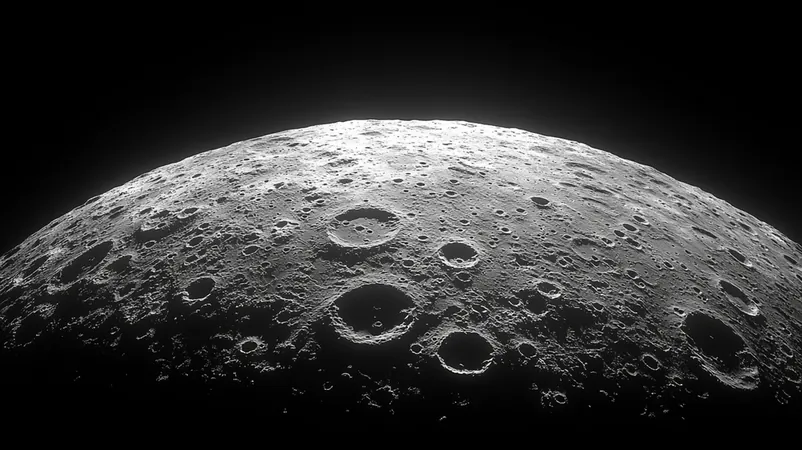
Unlocking Lunar Secrets: The Race to Find Ice on the Moon
2025-04-24
Author: Siti
A Game-Changer for Moon Bases
The discovery of ice on the Moon could revolutionize future lunar missions. This vital resource would not only support human habitation but could also be converted into hydrogen and oxygen, crucial elements for rocket fuel.
Hawaiian Researchers Lead the Charge
Researchers from the University of Hawai‘i at Mānoa are employing groundbreaking techniques in their quest to locate ice on the Moon. For years, scientists have been investigating the presence of ice, particularly in the Moon's permanently shadowed polar regions.
ShadowCam: A Revolutionary Tool for Detection
An exciting development comes from the work of Shuai Li and his team, who previously identified water ice in these darkly shaded areas. Now, graduate student Jordan Ando is harnessing the power of the 'ShadowCam,' a specialized camera aboard the Korea Lunar Pathfinder Orbiter.
These shadowy craters may not receive direct sunlight, but indirect light reflects within them, allowing ShadowCam to capture high-quality images. Ando explains, "Ice reflects more light than rocks. Using these images, we evaluated whether the presence of ice could be causing noticeable bright spots on the surface."
Exciting Findings and Limitations
Although the study found that the lunar surface did not brighten significantly due to the ice, it did help refine existing estimates. Prior research suggested that the surface held between 5% to 30% ice; however, the ShadowCam images indicate that the actual percentage is likely below 20%.
Buried Ice? Cosmic Rays to the Rescue!
In a separate innovative approach, a team from UH Mānoa proposes using natural cosmic rays as a tool to locate buried ice. Postdoctoral researcher Emily Costello explains, "These ultra-high-energy cosmic rays penetrate the lunar surface and emit radar waves that bounce back from buried ice, helping us infer what lies beneath."
Utilizing advanced computer simulations, this groundbreaking method paves a new path in the ongoing search for lunar water. Co-author Christian Tai Udovicic revealed, "This technique relies on high-energy physics, and it’s shocking to many planetary scientists, showing how experimental and fresh our approach is!"
A Future Filled with Possibilities
The research team is eager to develop a radar instrument tailored to detect these cosmic signals on the Moon. They aim to possibly deploy the equipment by early 2026, ushering in new hopes of uncovering significant deposits of ice.
Hawai‘i: The New Frontier in Space Exploration
As these exciting projects unfold, Hawai‘i is rapidly establishing itself as a center for lunar exploration. Costello emphasizes the importance of these initiatives, stating, "These innovative studies offer incredible opportunities for students and professionals in Hawai‘i to lead in the burgeoning space industry."




 Brasil (PT)
Brasil (PT)
 Canada (EN)
Canada (EN)
 Chile (ES)
Chile (ES)
 Česko (CS)
Česko (CS)
 대한민국 (KO)
대한민국 (KO)
 España (ES)
España (ES)
 France (FR)
France (FR)
 Hong Kong (EN)
Hong Kong (EN)
 Italia (IT)
Italia (IT)
 日本 (JA)
日本 (JA)
 Magyarország (HU)
Magyarország (HU)
 Norge (NO)
Norge (NO)
 Polska (PL)
Polska (PL)
 Schweiz (DE)
Schweiz (DE)
 Singapore (EN)
Singapore (EN)
 Sverige (SV)
Sverige (SV)
 Suomi (FI)
Suomi (FI)
 Türkiye (TR)
Türkiye (TR)
 الإمارات العربية المتحدة (AR)
الإمارات العربية المتحدة (AR)